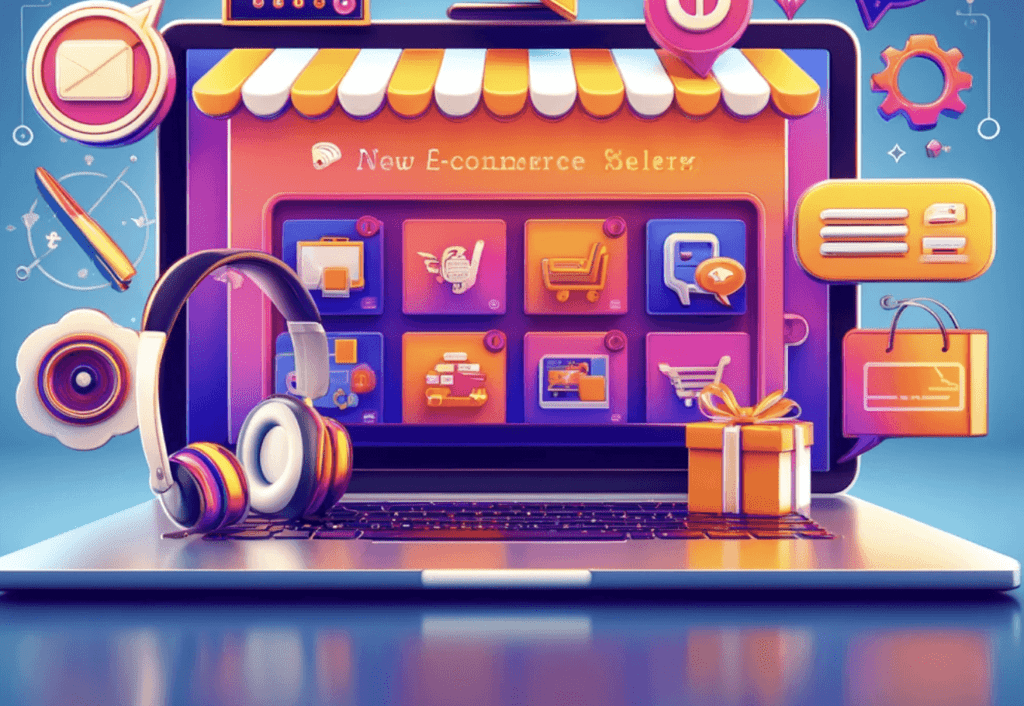Entering the world of eCommerce can be both exhilarating and daunting for new sellers. With the ever-evolving landscape of online sales, understanding the key strategies that drive success is crucial.
This guide outlines the best practices that new e-commerce sellers should adopt to ensure a smooth and profitable journey. Whether you’re planning to launch on platforms like Amazon, Shopify, or Etsy, these insights will help you establish a strong foundation. If you find it helpful, please share it with friends and colleagues.

Understand Your Market and Customer
Research Thoroughly: Before you launch your online store, spend significant time researching your market and potential customers. Understanding who your customers are, what they need, and what they value can guide your product choices, marketing strategies, and pricing strategies.
Competitive Analysis: Analyze your competitors to learn what works and what doesn’t in your niche. This insight can help you differentiate your offerings and identify gaps in the market that you can exploit.
Optimize Your Online Store
Website Design: Your website is often the first impression customers will have of your business. Make sure it is visually appealing, easy to navigate, and optimized for mobile devices. A clean, user-friendly design can significantly enhance the customer experience and boost conversion rates.
SEO Best Practices: Implement search engine optimization (SEO) strategies to increase your visibility online. Use relevant keywords, optimize product descriptions and images, and ensure your site structure is search engine friendly.
Effective Inventory Management
Stay Organized: Keep track of what you have in stock, what’s on order, and when new shipments will arrive. Effective inventory management prevents overstocking and stockouts, ensuring you can meet customer demand without excess expenditure on unsold goods.
Use Automation Tools: Consider investing in inventory management software that can help automate tasks like tracking stock levels, reordering products, and analyzing sales patterns.
Streamline Fulfillment and Shipping
Reliable Shipping Options: Offer multiple shipping options to meet different needs and budgets. Ensure that your shipping rates are competitive and consider offering free shipping thresholds to increase average order values.
Packaging: Invest in quality packaging that ensures products reach customers undamaged. Branded packaging can also enhance the customer unboxing experience and reinforce your brand identity.
Leverage Social Media and Marketing
Build a Presence: Use social media platforms to build a connection with your audience. Regular posts, interaction with followers, and promotions can drive traffic to your site and foster a loyal customer base.
Email Marketing: Develop an email marketing strategy to communicate directly with your customers. Send updates, promotions, and personalized offers to encourage repeat business.

Prioritize Customer Service
Responsive Support: Offer excellent customer service by being responsive to inquiries, complaints, and feedback. Quick and effective resolution of issues builds trust and can turn dissatisfied customers into brand advocates.
Solicit Feedback: Actively seek customer feedback to improve your products and services. Online reviews not only influence potential buyers but also provide valuable insights into what your business is doing well and where it can improve.
Stay Agile and Keep Learning
Adapt to Changes: The e-commerce industry is dynamic. Stay updated with the latest trends, technologies, and customer preferences. Being adaptable can help you seize new opportunities and navigate challenges.
Continuous Learning: Invest in learning new skills and strategies in e-commerce. Whether through online courses, webinars, or industry groups, continuous learning is key to staying competitive.
Frequently Asked Questions
Q: What is the most important factor for success in eCommerce?
A: Understanding your customer and delivering excellent customer service are crucial. A deep understanding of your audience drives all other aspects of your business, from product selection to marketing strategies.
Q: How can I increase traffic to my new online store?
A: Implement SEO best practices, engage on social media, and consider paid advertising to drive traffic. Collaborations and promotions can also attract new customers.
Q: Is it necessary to offer free shipping?
A: While not mandatory, free shipping is a powerful incentive for many online shoppers. Consider your pricing strategy and margins to determine if you can offer free shipping profitably.
Final Analysis
Adopting these best practices will equip new eCommerce sellers with the strategies needed for success in the competitive digital marketplace. With dedication, ongoing learning, and a customer-focused approach, you can build a thriving online business.
Time to Profit
Ready to jumpstart your e-commerce business without the hassle? At Elite Automation, we specialize in creating done-for-you e-commerce stores that generate largely passive profits each month. Contact us today to learn how we can help you achieve your goals with ease and efficiency.

